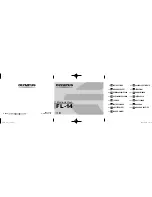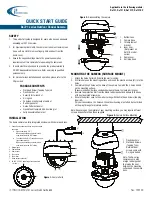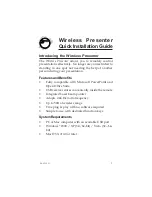
178
Live View Shooting Cautions
Image Quality
When you shoot at high ISO speeds, noise (such as dots of light and
banding) may become no iceable.
Shooting in high temperatures may cause noise and irregular colors in the image.
If Live View shooting is used con inuously for a long period, the camera’s
internal temperature may rise, and image quality may deteriorate.
Always exit Live View shooting when you are not shooting.
If you shoot a long exposure while the camera’s internal temperature is
high, image quality may deteriorate. Exit Live View shooting and wait a
few minutes before shooting again.
White <
s
> and Red <
E
> Internal Temperature Warning Icons
If the camera’s internal temperature increases due to prolonged Live View shooting
or under a high ambient temperature, a white <
s
> or red <
E
> icon will appear.
The white <
s
> icon indicates hat the image quality of still photos will
deteriorate. You should exit Live View shooting and allow the camera’s
internal temperature to cool before shooting again.
The red <
E
> icon indicates that the Live View shooting will soon stop
automatically. If this happens, you will not be able to shoot again until the
camera’s internal temperature decreases. Exit Live View shooting or turn
off the power and let the camera rest for a while.
Using Live View shooting at a high temperature for a prolonged period
will cause the <
s
> or <
E
> icon to appear earlier. When you are not
shooting, turn off the camera.
If the camera’s internal temperature is high, the image quality of high ISO speed images
or long exposures may deteriorate even before the white <
s
> icon is displayed.
Shooting Result
If you take the picture in magnified view, the exposure may not come out as
desired. Return to the normal view before taking the picture. In magnified view,
the shutter speed and aperture will be displayed in orange. Even if you take the
picture in magnified view, the image will be captured in the normal view range.
If [
z
2: Auto Lighting Optimizer
] (p.130) is set to other than [
Disable
],
the image may look bright even if a decreased exposure compensa ion
or decreased flash exposure compensation is set.
If you use a TS-E lens (except the TS-E17mm f/4L or TS-E24mm f/3.5L
II) and shift or tilt the lens or use an Extension Tube, the standard
exposure may not be obtained or an irregular exposure may result.
Summary of Contents for EOS 100D
Page 20: ......
Page 72: ......
Page 115: ...115 MEMO ...
Page 117: ...E INSTRUCTION MANUAL The Quick Reference Guide is included at the end of this manual ...
Page 144: ......
Page 172: ......
Page 206: ......
Page 296: ......
Page 330: ......
Page 422: ......
Page 474: ...358 MEMO ...
Page 475: ...359 MEMO ...
Page 476: ...360 MEMO ...
Page 526: ......
Page 527: ... ...
















































